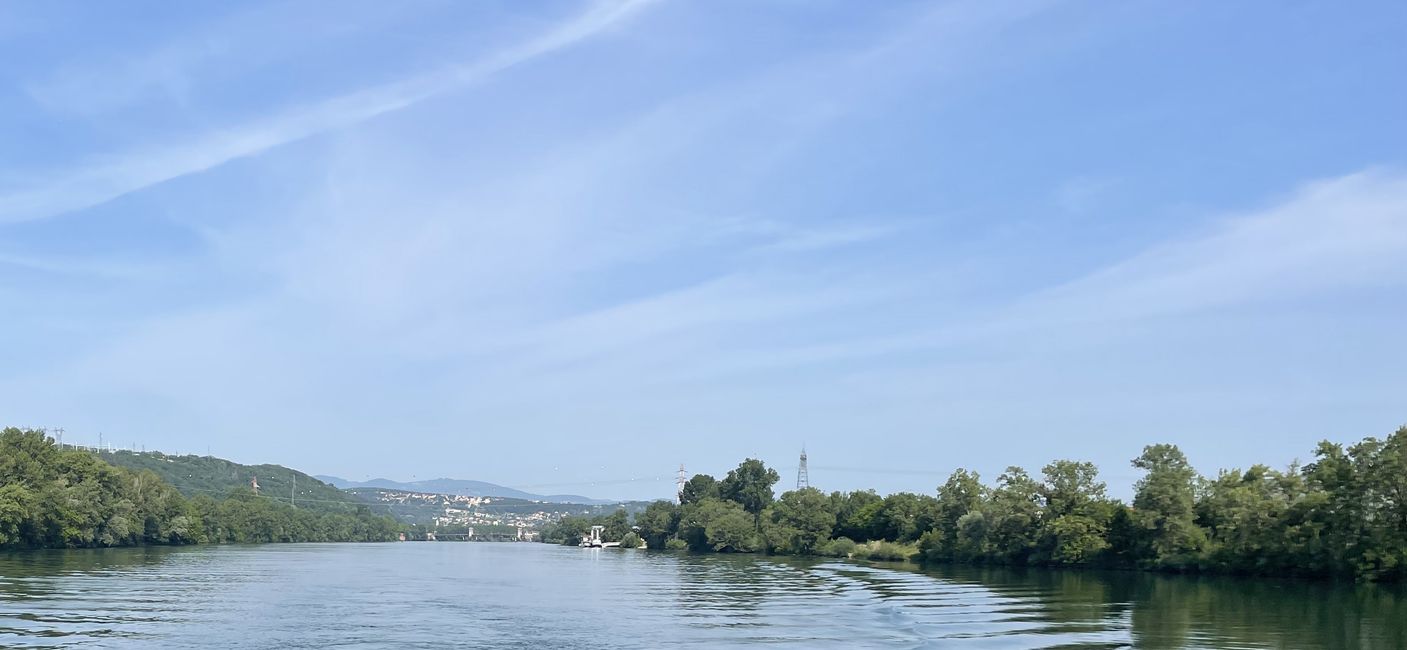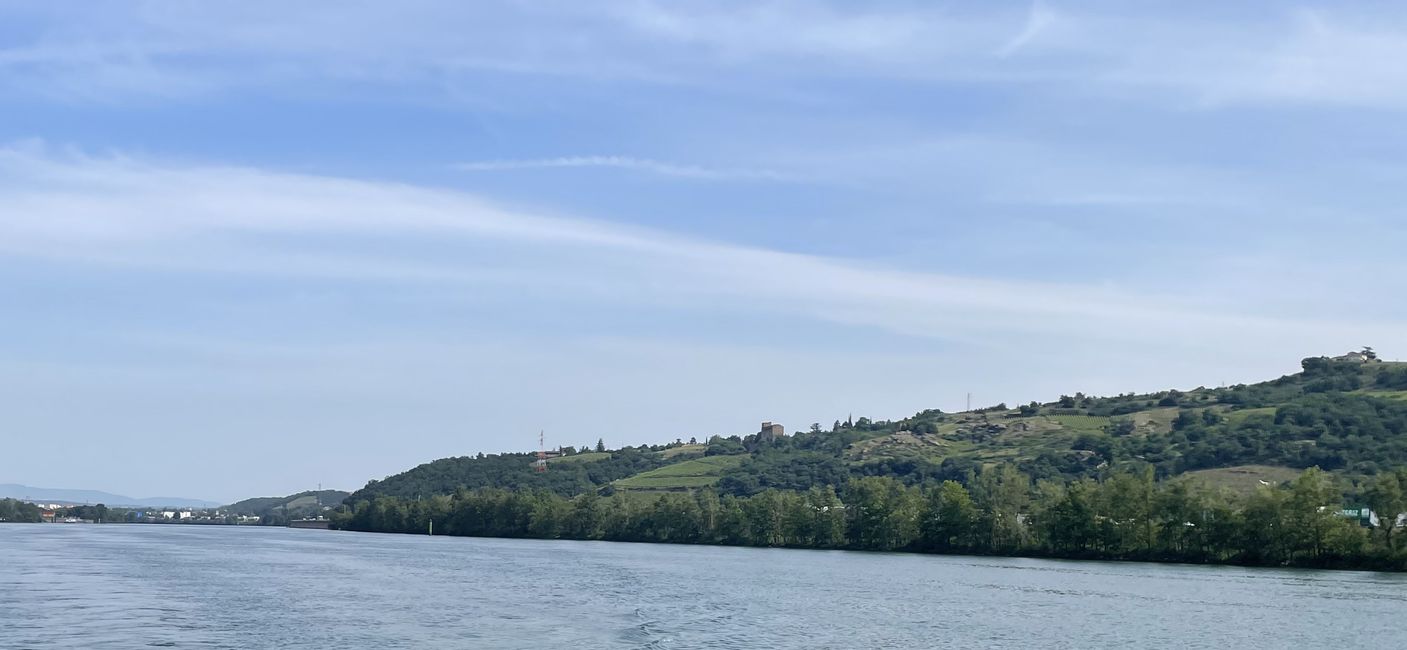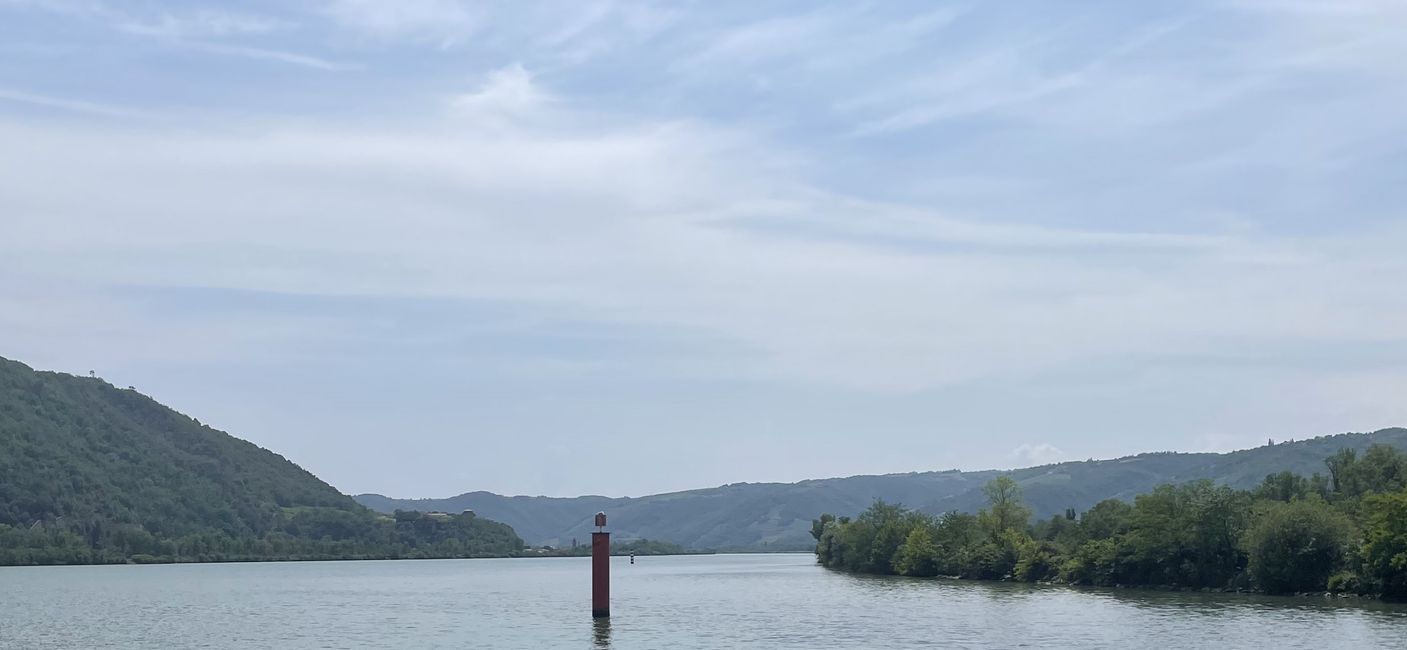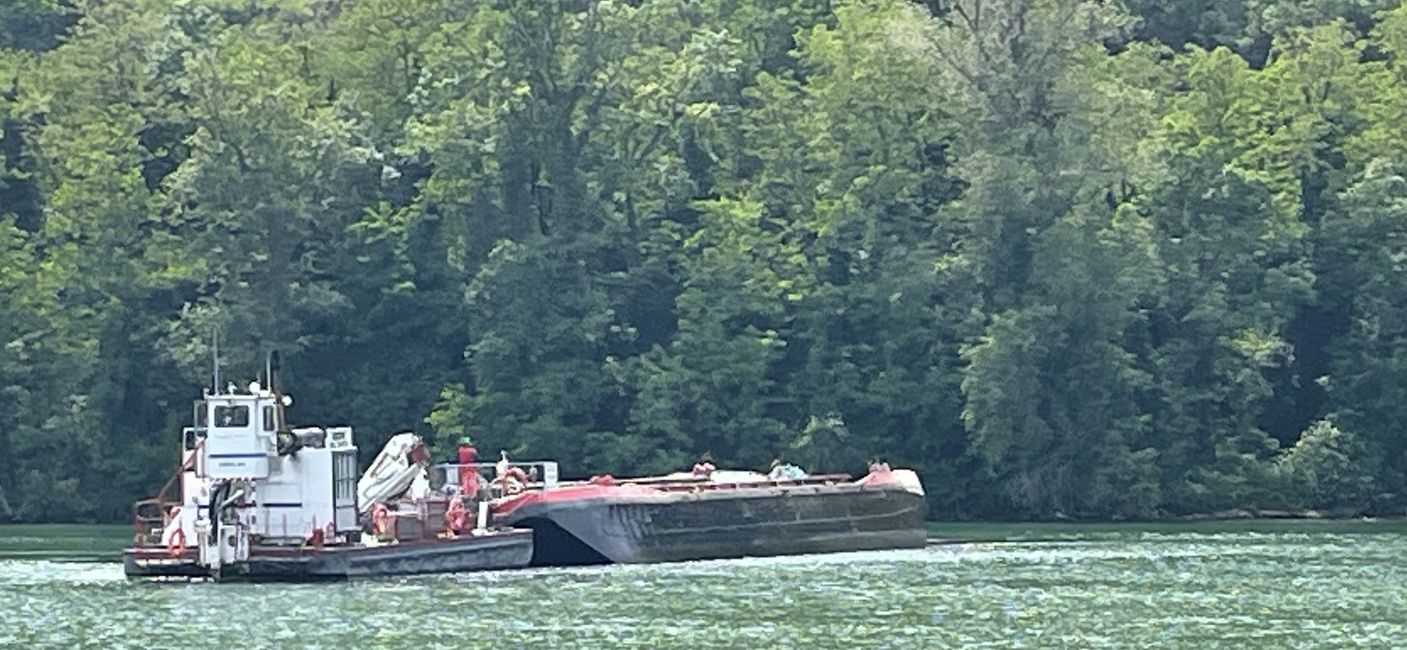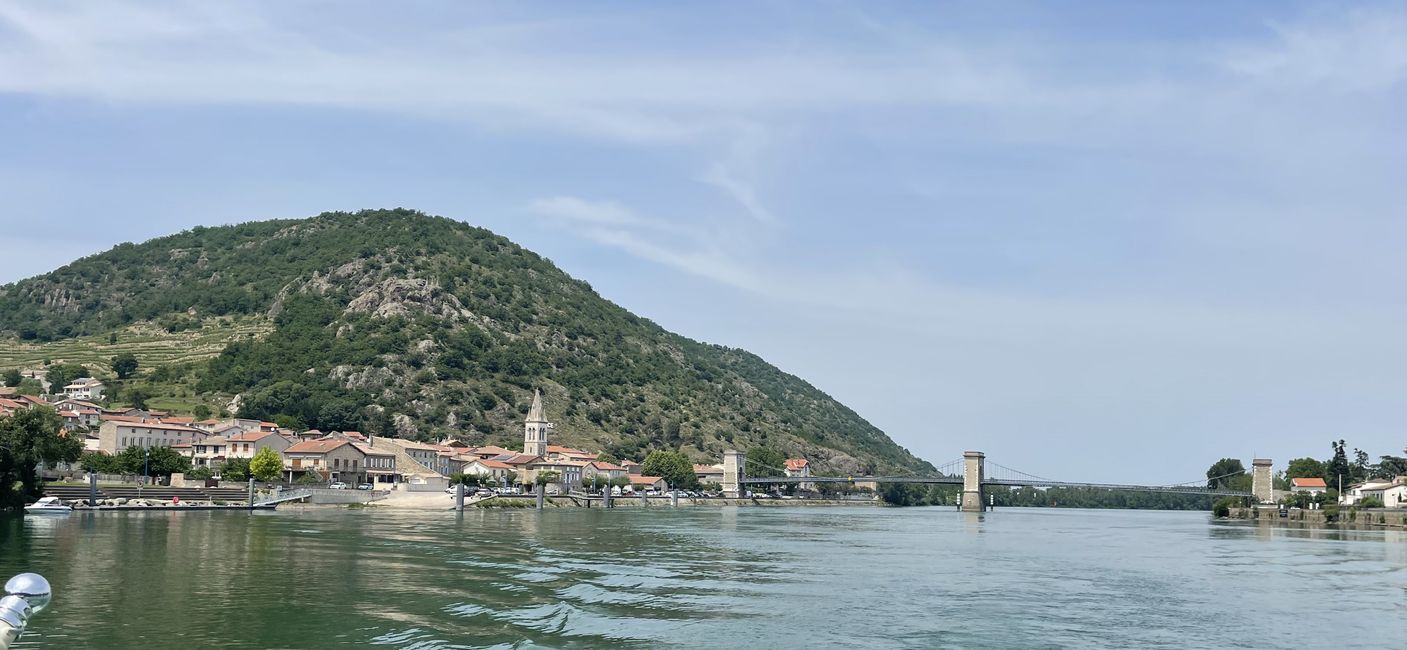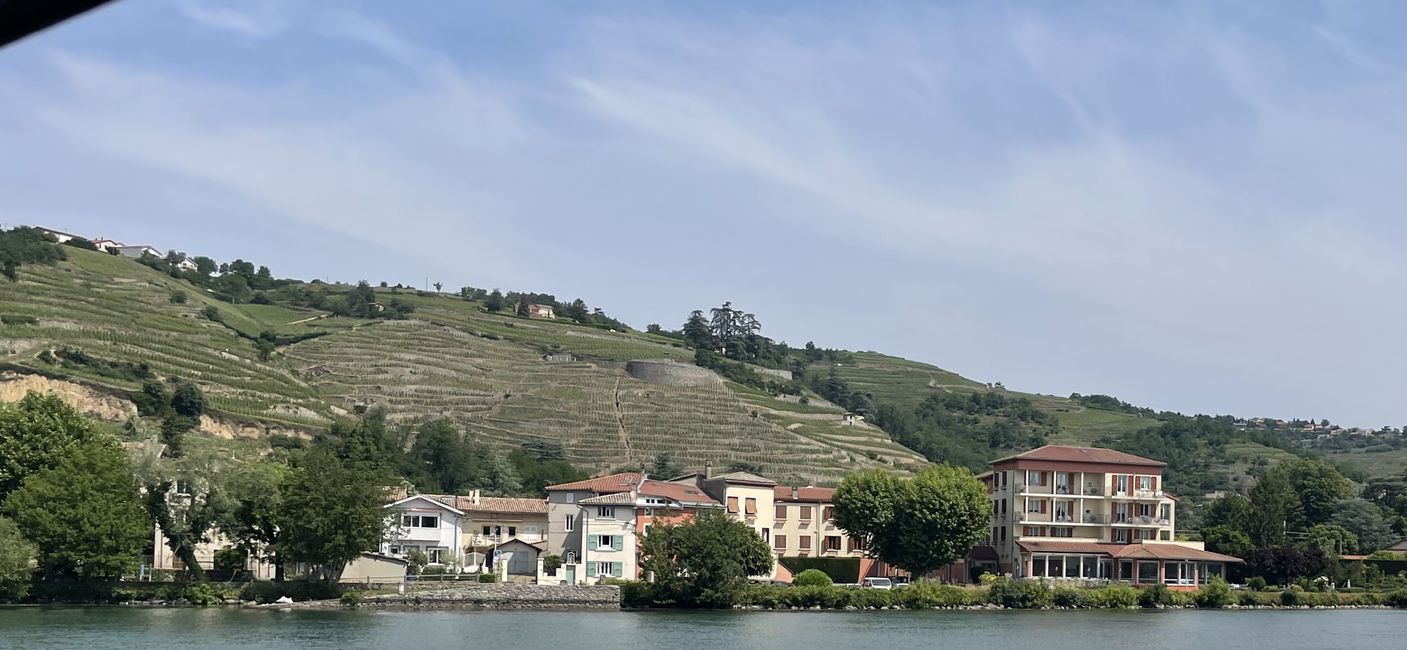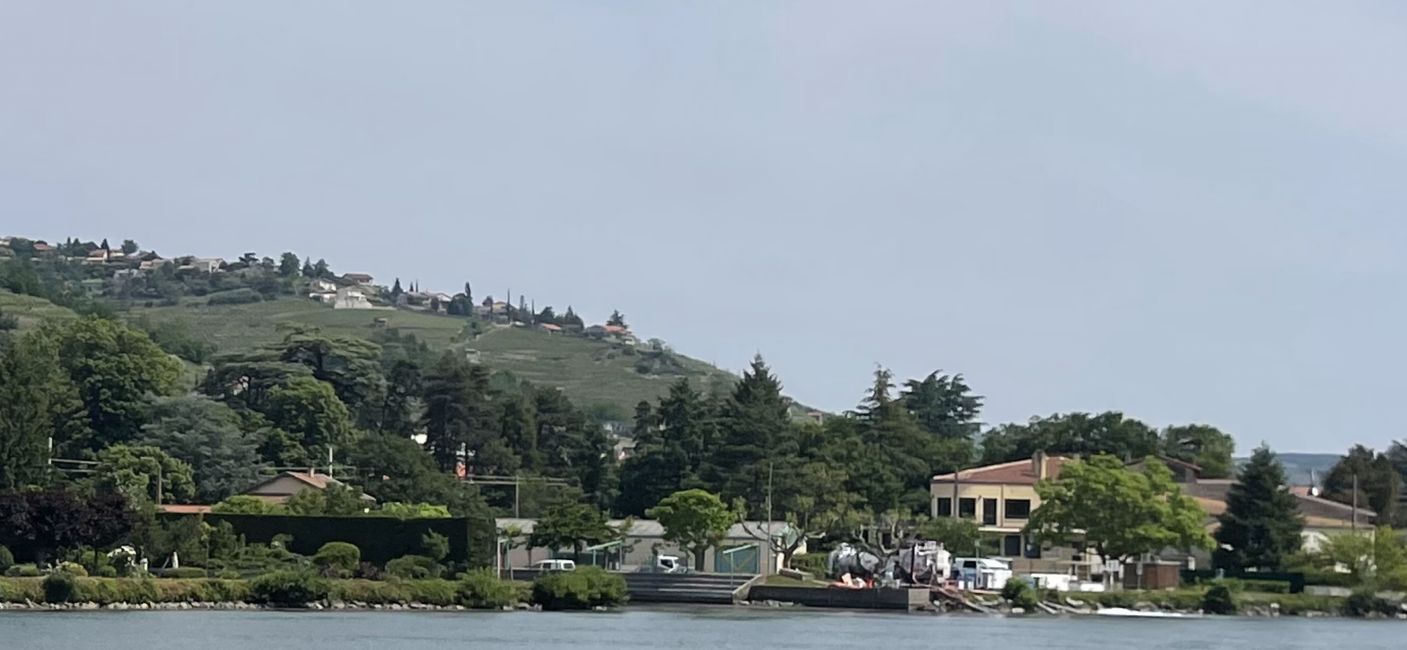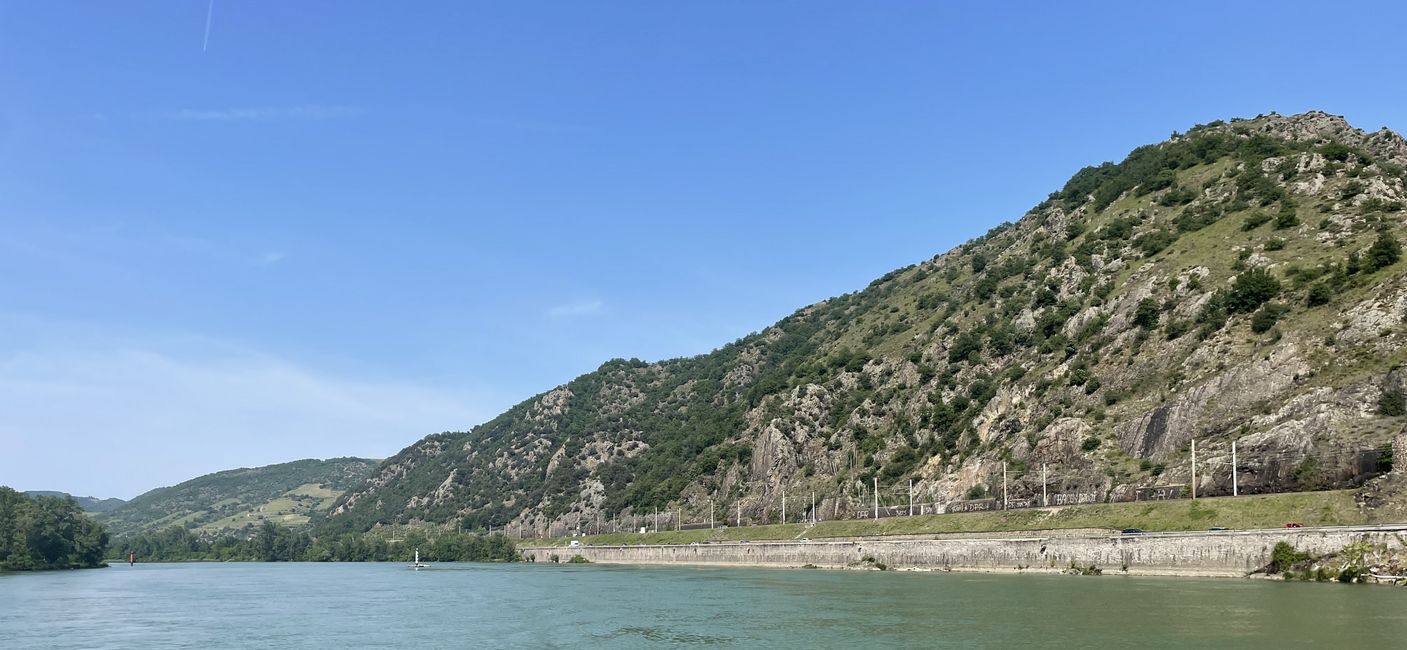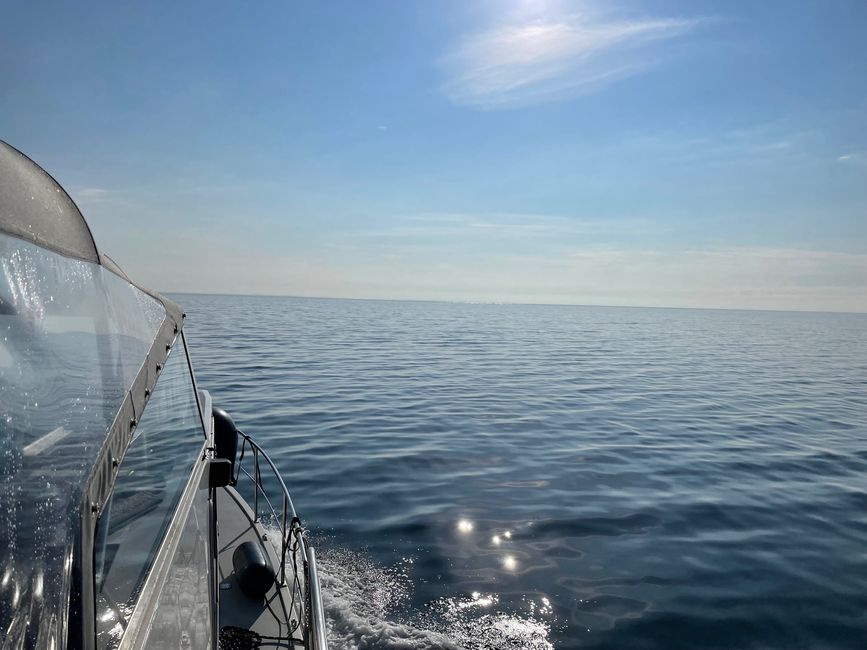
Odenwälder-auf-dem-Weg-ins-Mittelmeer
vakantio.de/odenwalder-auf-dem-weg-ins-mittelmeer
ליאָן צו וואַלענס
פֿאַרעפֿנטלעכט: 31.05.2023
אַבאָנירן צו נעווסלעטטער
Today we covered one of our longest daily stages. Our route planner tells us 109 km and 5 locks. In the evening, we talked to the crew of the Sternchen. They arrived late from the south and wanted to continue to Bremerhaven.
We had read several times that the wind and the passage through the locks could be dangerous. This was also the message from the Sternchen. So we were appropriately sensitized and approached the locks with the corresponding respect.
We contacted the lock at a sufficient distance. While the lock was getting ready, we were able to drift in the upper water and after clearance we entered the chamber. I have to add that we were alone in all the locks, so we didn't have to watch out for the surge of a preceding freighter. All locks are equipped with floating bollards and I can confirm that these also functioned in all the locks. It is impressive when the chamber drops and all the bollards are in motion. The floating bollards make sounds that I only know from underwater films in documentaries about whales. The height of the locks can also impress you. We know such heights from our last trip to the Baltic Sea, but there are only one or two locks there.
The current in the river is about 4-5 km/h at the current water level. With our 1500 rpm, we can reach speeds of up to 16.5 km/h. So on the first day, the Rhone presented itself more as a mild stream than a rushing river.
The landscape is impressive, with the right bank being limited by the Massif Central with heights of up to almost 1900 m. Vineyards as far as the eye can see, the small northern part of the Cote du Rhone wine-growing region, Rhone Septentrional. The left bank is flatter and accompanied by river meadows. Behind them are industrial areas and towns, of which only a few places can be seen.
This magnificent landscape doesn't come across so well in pictures. I have minimized my pictures for today.
אַבאָנירן צו נעווסלעטטער
ענטפער
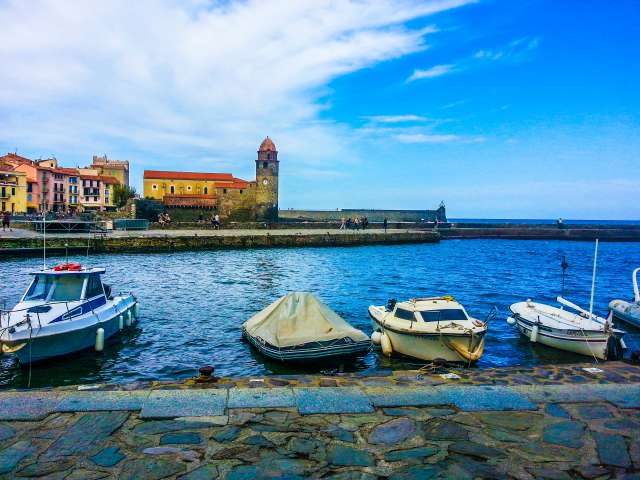
רייזע ריפּאָרץ פֿראַנקרייַך

